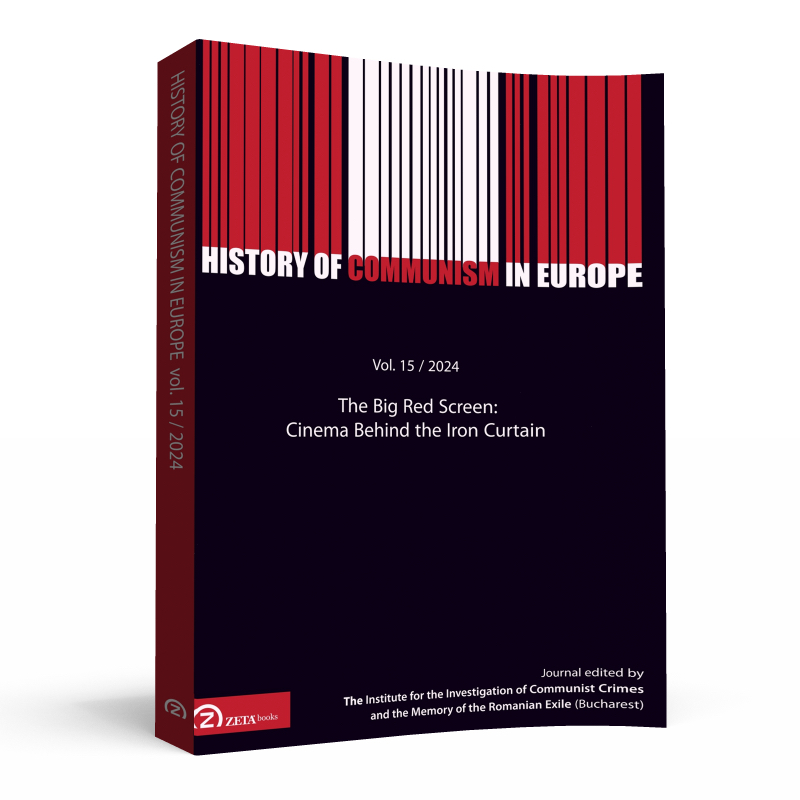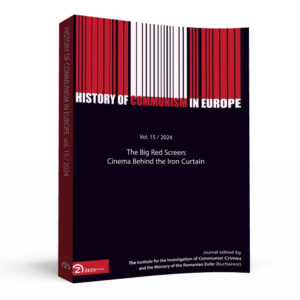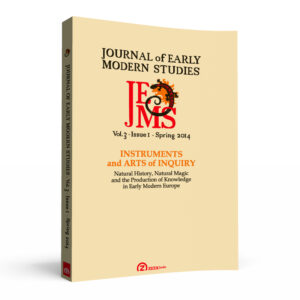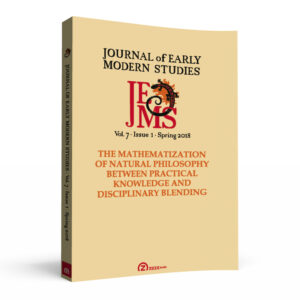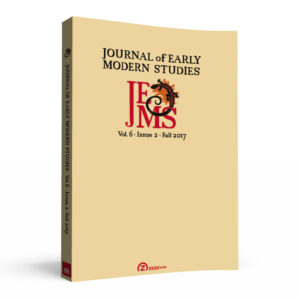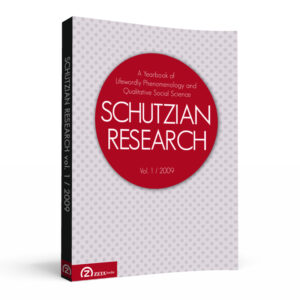History of Communism in Europe, vol. 15 / 2024: The Big Red Screen: Cinema Behind the Iron Curtain
TABLE OF CONTENTS
BOGDAN JITEA, Introduction: “Of All the Arts, Cinema is the Most Important for Us.” Cinema Behind the Iron Curtain [OPEN ACCESS]
Abstract: This argument explores the pivotal role of cinema in shaping and reflecting the sociopolitical landscape of communist regimes in Eastern Europe. Under Stalin, Soviet cinema evolved into a state-controlled instrument of socialist realism, influencing cultural production throughout the Eastern Bloc. While some countries with established cinematic traditions adapted to or resisted the Soviet model, others adopted it wholesale, leading to varying degrees of creative expression and control. Through interdisciplinary contributions, the latest issue of HCE highlights the duality of cinema as both a tool for ideological control and a medium for dissent and creative resistance, revealing the complex interplay between art and politics in communist societies.
I. The Cinema That Came from the Cold
MARTA PASZEK, Show Trials in Poland During the Stalinist Period in the Film
Abstract: One of the ways in which film was used by the communist authorities for propaganda purposes was to present show trials. The aim of the article is an attempt to explain how film was used in Poland to discredit defendants in trials before courts during the Stalinist period. How were the roles of the participants in the court proceedings presented in the film? How were the films from court hearings to be used to depreciate the defendants in the eyes of society, and to legitimise and strengthen the authority of the new government? The article is based on examples of films from show political trials of “enemies of the people” in Poland in the 1940s and 1950s.
ADRIAN EPURE, Spies and Secret Agents in Romanian Films of the Early Cold War
Abstract: A focus on the ideological use of popular culture has been one of the major innovations in the study of the Cold War over the past years. Films played a central role in the popular culture of that period and the spy genre was a very important direction in the battle for winning domestic and global hearts and minds for both the United States and the Soviet Union. Cinematography had a critical importance because it met the demands of both entertainment and ideological functions. Utilising extensive archival research in film production files, this article attempts to fill a gap in the literature by providing an overview of how the tensions between East and West were exploited into the Romanian films of the first two decades of the Cold War. Focusing on the cultural and political context in which films such as Viața învinge (Life Triumphs – Dinu Negreanu, 1951), Alarmă în munți (Alarm in the Mountains – Dinu Negreanu, 1955), Vultur 101 (Eagle 101 – Andrei Călărașu, 1957), Secretul cifrului (The Secret Code – Lucian Bratu, 1960) and Pisica de mare (Stingray – Gheorghe Turcu, 1964) were produced, while analysing the evolution of the image of spies and secret agents in these cinematic productions, this paper reveals how the spy film genre emerged in communist Romania during the period when Gheorghe Gheorghiu-Dej was in power, and how it contributed to the creation of images that marked the collective mind of the period for decades.
BOGDAN JITEA, The Iron Curtain Fell for a Second Time on the Romanian Cinema. “Socialist Humanism” in the Beginning of the ‘70s
Abstract: The article examines the way in which, after a short period of liberalisation and opening to the West, the Romanian Cinema during the Ceaușescu regime follows a path of increasing ideological themes and political control. The process began shortly after the consolidation of the power by the new Secretary General and unfolded gradually, culminating in 1971 with the “July Theses”. Like the rest of the cultural activities, the effects of this retraction into the ideological shell of national-communism, marked by strong xenophobic and isolationist accents, can be seen in the film industry as well. The article relies on the files in the fonds of the Central Committee of Romanian Communist Party to cover the specificities of the cultural policies in Ceaușescu’s Romania. The way these policies were received by the cinema industry is reflected in the issues of Cinema magazine from the second half of the ‘60s to the mid-70s. Finally, the specific Romanian case is analysed in the broader context of the other communist regimes of Eastern Europe during the years of Cold War detente.
IULIA POPOVICI, Exporting Culture in the Global South. Cinema as Economic Diplomacy
Abstract: The oil crisis at the end of the 1970s and, soon after, the sovereign debt crisis of socialist Romania had a huge impact on the domestic cultural system – mainly through austerity mechanisms of cutting production costs and increasing minimal mandatory revenues. One effect was the reshaping of cultural exports and exchanges on new, market-oriented bases, meant to also support the economic reorientation towards the Global South. In this article, I intend to follow the way the Romanian communist regime used culture, in general, and particularly international film production and distribution as a tool for advancing not so much propaganda purposes, but prosaically more commercial ones. The article also shows how the contextual landscape led to a lack of consistency and efficiency in both the economic and propaganda efforts.
II. Alternative Frames
ANDREI RUS, The Avant-Garde and Experimental Film in Socialist Romania
Abstract: Although socialist Romanian cinematography focused on commercial and artistic feature films, hundreds of short films were produced every year on the fringes of the industry, in specialised animation and documentary studios, in amateur cine-clubs, by students at the National Institute of Film and Theatre in Bucharest, and by other amateurs (some of them visual artists) who owned a personal camera. Starting from an analysis of the context that allowed for such practices to flourish in a state whose official policies did not support this typology, this essay explores the modes of production and the experimental tendencies in Romanian cinema during the socialist era, mapping the territories where the avant-garde and experimental film manifested themselves. It is a gesture of digging at the margins of the film industry in the hope of shaking up the current canon and of offering a better understanding of the peripheries of the period’s cultural production, which will reverberate in the ways we are used to approaching its centre.
ALEXANDRA BARDAN, Paracinema in Socialist Romania During the 1980s: the VHS and the Emergence of Alternative Movie Repertoires
Abstract: This article examines the emergence of video home systems (VHS) in socialist Romania within the broader context of state-controlled cinema industry and through the conceptual lens of “paracinema.” Rather than viewing video as a disruption in film consumption, the study explores films as both cultural products and commodities. The analysis addresses the social construction of paracinema repertoires in a broader context and uses discourse analysis to explore ruptures and continuities in the polarised framing of films. The results show an intersection of socialist cinema cultures and VHS repertoires, revealing a continuity in moral debates around popular film genres. The discussion also reveals how the circulation of videotapes in the black market and the emergence of alternative VHS film repertoires exposed the tensions between state policies and public demand, ultimately reshaping the social construction of cinema cultures under socialism.
III. Critical Essays
SUSANNE ALTMANN, Muratova, Chytilová Meeting Miss Butterfly and Franziska Linkerhand: Female Directors and Female Protagonists Subverting Socialist Housing Schemes
Abstract: My essay investigates the representation of female protagonists in selected feature films that were produced in the Central European socialist realm of the 1960s and the long 1970s. While mainly concentrating on Czechoslovakian filmmaker Věra Chytilová and Kira Muratova from Soviet Ukraine, the study will also draw comparisons to the subversive heroines in two East German films. The unifying aspect consists of commenting on the literal construction of a socialist environment through architecture and urban planning. By means of contrasting the individual and the realisation of collective structures, contradictions are disclosed that foreshadow the demise of the socialist project. All film directors introduced here employ women with a critical agency towards systemic regulations that are based on ideological premises. As an art historian, I focus on aesthetic collisions and iconographic prototypes of rebellious femineity, trying to identify a specific visual language that was opposed to the heroic guidelines of Socialist Realism and showed the slow erosion of related formulae, both in art and reality.
DELIA BRAN, The Use of Cultural Heritage in Romanian Socialist Cinema
Abstract: The Romanian communist cinematography has been analysed from the point of view of its value to the regime’s ideology or propaganda. The aim of this article is to examine Romanian cinema for its use of cultural heritage from the perspective of an art historian and museum curator. Using the current taxonomy of cultural heritage in Romania: movable cultural heritage – meaning paintings, drawings, decorative art – and immovable cultural heritage – buildings, houses, inns, cultural monuments, the article follows these categories in the filmmaking industry. They were both used in Romanian cinematography with the approval of the State and Party authorities. The main objective of this article is to “cut” the frames of selected films and see how and which cultural heritage objects were used in cinematography.
ION INDOLEAN, DANI SĂRĂCUȚ, Allegory as a Form of Criticism in the Cinematography of the Ceauşescu Regime
Abstract: This paper explores how allegory served as a subtle yet powerful form of criticism in Romanian cinema during the 1980s, under Nicolae Ceauşescu’s authoritarian regime. The research focuses on selected films by directors such as Dan Pița, Alexandru Tatos, and Copel Moscu, who used metaphorical and indirect approaches to criticise the oppressive social and political climate. Through detailed content analysis, the study reveals how these filmmakers circumvented strict censorship by embedding criticism of societal conditions and governmental control in their works. The paper also discusses the production and distribution challenges faced by these films, emphasising the filmmakers’ resistance to the regime’s constraints and their efforts to depict the harsh realities of life in socialist Romania. Ultimately, the paper contributes to the understanding of how Romanian artists used cinema as a medium of resistance and cultural expression in a repressive political environment.
IV. Book Review
Dalia BÁTHORY
Masha Salazkina, Romancing Yesenia: How a Mexican Melodrama Shaped Global Popular Culture (University of California Press, 2024)
ISSN 2069-3192 (paperback)
ISSN 2069-3206 (electronic)

